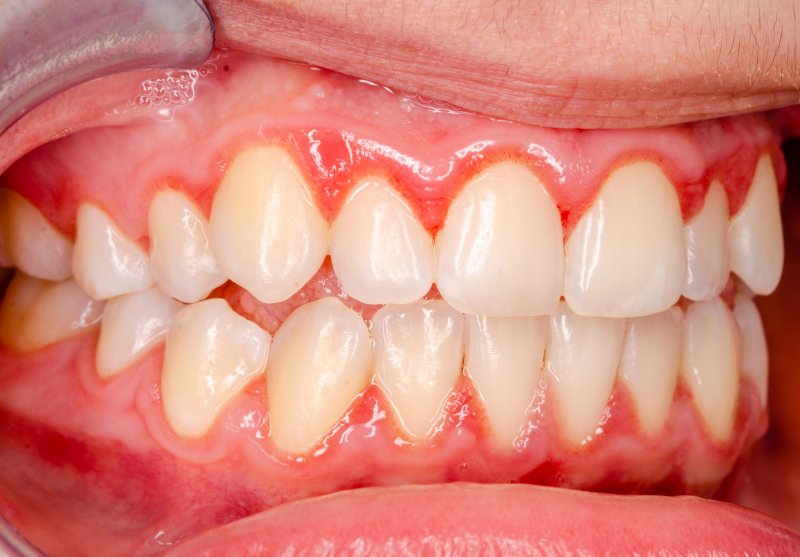
Gum disease may be one of the most common oral health problems experienced by adults in America today, but did you know there are varying stages of severity? Leaving your swollen, reddening, bleeding soft tissues untreated can lead to more serious and damaging issues not only in your mouth but also in your body. In this article, we’ll look at the differences between gingivitis and periodontitis so you can get the help you need before things worsen.
What is Gum Disease?
Do your gums appear red, tender, or inflamed? Do they bleed when you brush or floss? If so, you have gum disease. According to the Journal of Dental Research, a 2018 report found nearly half of Americans over the age of 30 are living with gum disease. Essentially, that is 65 million people.
Also referred to as periodontal disease, it develops when bad oral bacteria attack the soft oral tissues surrounding your teeth. Causing inflammation, it is considered the leading cause of tooth loss and is commonly linked to diabetes, negative cognitive decline, and other serious health issues.
How Are Gingivitis and Periodontitis Different?
The first stage of gum disease is known as gingivitis, which results in inflammation throughout the tissues because of an accumulation of plaque buildup. At this point, the jawbone is unaffected; however, it serves as a warning that you must be more diligent with your oral hygiene routine. Frequent brushing and flossing as well as regular dental cleanings can reverse the symptoms and restore your gum health.
Periodontitis is a more advanced form of gum disease that, when left untreated, causes gum pockets to form. This is when the soft tissues pull away from the teeth, making it easier for bacteria and food particles to become trapped. Eventually, the plaque spreads beneath the gums, damaging teeth and bone.
Without necessary treatment, infection and inflammation can enter the bloodstream and travel to various parts of the body, negatively impacting the heart, brain, lungs, and kidneys.
How Can They Be Treated?
The first important thing to remember is that gum disease should be taken seriously. Waiting until the problem worsens will only increase your risk for severe damage to your mouth and body. The good news is there are treatments available that are designed to eradicate bad bacteria and minimize your chances of tooth and bone loss, such as:
- Scaling and Root Planing: This is the process of removing plaque and tartar buildup above and below the gum line, deep into the pockets (scaling) as well as smoothing the tooth roots to encourage reattachment of the gums and reduce future reinfection (root planing).
- Gum Pocket Reduction Surgery: By exposing the tartar underneath the gums, it can be removed before areas of the bone are smoothed to remove bad bacteria. Once completed, the tissues are positioned and placed to snugly fit around teeth once again.
- Bone Graft: If bone loss occurs, this process requires using grafting materials and placing them in the weakened areas of the jawbone, allowing for regrowth and more stable teeth.
Don’t wait to seek help for gingivitis or periodontitis. The sooner you are seen by a professional the greater your chances of taking back your soft oral tissues and moving forward with a healthier smile.
About the Author
Dr. Rob Wood is a board-certified periodontist in Salt Lake City who goes above and beyond to deliver long-lasting results. Earning his dental degree from Temple University Kornberg School of Dentistry, he completed his specialty training in periodontics at the University of Texas. Offering an array of treatment options to patients suffering from periodontal disease, he and his team at Utah Implants & Periodontics are here to ensure the health and future of every person’s smile. If your gums are receding and you need professional help, contact us at (801) 322-5032.
